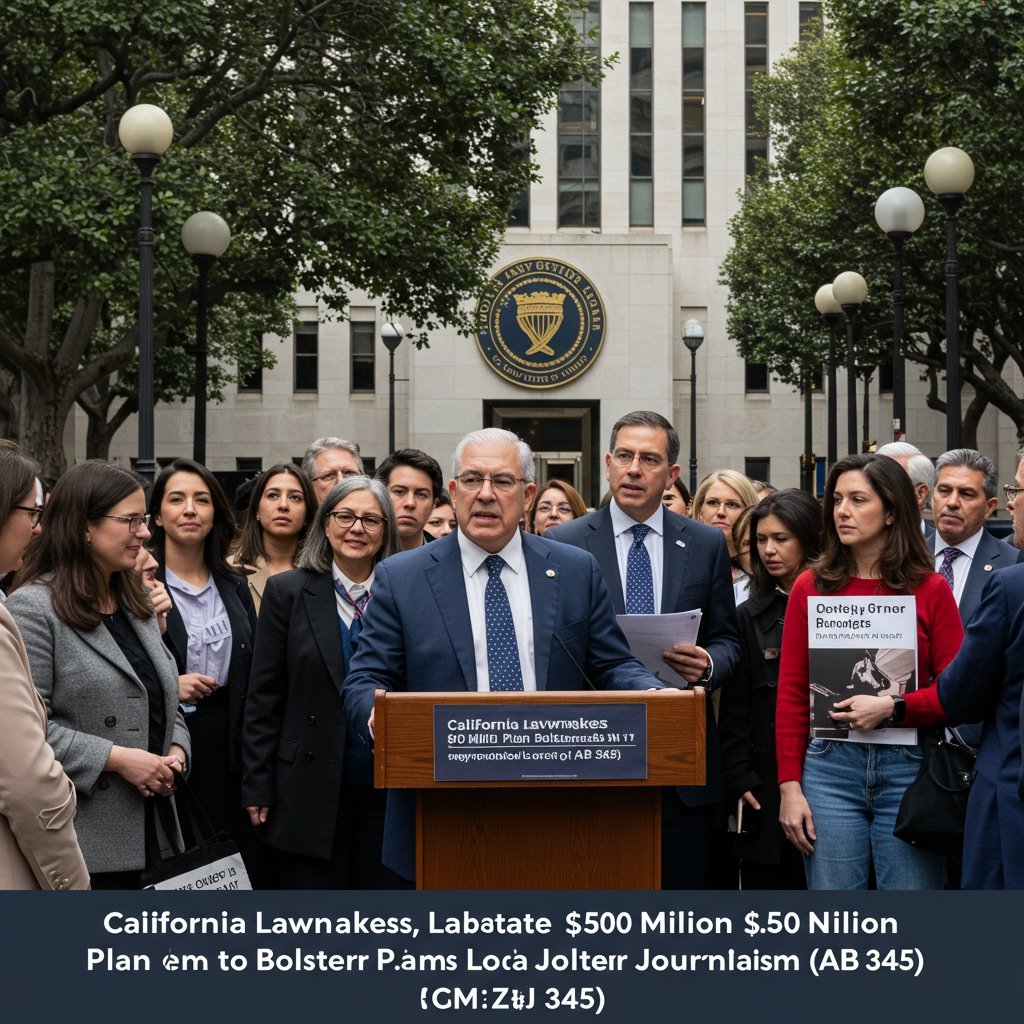Assembly Committee Examines Historic Bid to Fund California Local News
Sacramento, CA – In a move signaling the growing urgency surrounding the state of local news, the California State Assembly’s Communications and Conveyance Committee convened on February 15, 2025, for a crucial hearing. The focus of the session was Assembly Bill 345 (AB 345), officially titled the “California Local Journalism Sustainability Act.” This proposed legislation seeks to establish a significant state-backed initiative aimed at providing financial lifelines to struggling local news outlets across California.
At the heart of AB 345 is the creation of a substantial $50 million annual grant program. The bill proposes that this fund would be administered by a newly formed independent state board, specifically designed to operate arms-length from direct political influence. The primary mechanism for distributing these funds would be through competitive grants. Eligible local news organizations could apply for support specifically earmarked for two critical areas: staffing, to help newsrooms hire and retain journalists, and digital infrastructure, enabling outlets to invest in technology necessary for modern news gathering, production, and distribution in the digital age.
The proposed legislation arrives amidst widespread concerns about the decline of local journalism. Over the past two decades, California, like many other states, has seen numerous local newspapers close, reduce staff significantly, or consolidate under larger, often distant, ownership. This decline has contributed to the proliferation of “news deserts”—areas with limited or no credible local news coverage—and has been linked to decreased civic engagement and an increased susceptibility to disinformation.
Proponents of AB 345 argue that the bill represents a vital intervention necessary to preserve democratic functions and ensure informed communities. The California News Publishers Association (CNPA) has been a vocal advocate, emphasizing the critical role local news plays in holding power accountable, reporting on local government, and providing essential information to residents. Supporters contend that market forces alone have proven insufficient to sustain robust local news coverage, particularly in underserved communities, and that public support, carefully structured to protect independence, is now essential.
During the February 15th hearing, proponents highlighted the specific challenges faced by local news organizations, including declining advertising revenue, the shift of audiences and revenue online, and the increasing cost of maintaining journalistic standards. They framed the $50 million grant program as an investment in California’s civic infrastructure, arguing that the grants for staffing would directly combat job losses in the sector, while funding for digital infrastructure would help news outlets adapt to the changing media landscape and reach audiences more effectively.
However, the bill is not without its critics. Concerns were raised during the hearing by some tech industry groups, among others. A primary point of contention revolves around the potential for state funding, even through an independent board, to influence editorial independence. Critics voiced worries that receiving state funds could create a real or perceived pressure on news organizations to tailor coverage, either consciously or unconsciously, to align with state interests or avoid scrutinizing state actions too harshly. While the bill’s design for an independent board is intended to mitigate this, questions remain about the selection process for board members and the mechanisms to ensure absolute autonomy.
Another area of concern raised by opponents relates to the funding source for the $50 million annual program. While the specific source wasn’t detailed in the initial summary, debates around state spending priorities and potential new revenue streams are common in legislative discussions of this magnitude. Critics questioned whether a state grant program is the most effective or appropriate mechanism to address the complex economic challenges facing the news industry, suggesting that market-based solutions or tax incentives might be preferable alternatives.
The committee hearing on February 15, 2025, served as an initial platform for airing these competing perspectives. Members of the Assembly Communications and Conveyance Committee heard testimony and posed questions, seeking to understand the potential benefits and risks associated with AB 345. The robust discussion underscored the complexity of the issue and the differing views on the government’s role in supporting the news media.
Significantly, the committee did not proceed to a vote on AB 345 during this session. This decision indicates that while the bill is actively being considered, it requires further refinement. Committee members and stakeholders acknowledged the need for additional amendments to the proposed legislation, likely addressing some of the concerns raised regarding editorial independence, the structure and appointment of the independent board, and potentially details about funding mechanisms and eligibility criteria for grants.
The path forward for AB 345 involves incorporating these expected amendments and undergoing further review within the legislative process. It must gain committee approval before it can advance for a full vote by the California State Assembly. The debate surrounding the “California Local Journalism Sustainability Act” reflects a broader, ongoing national conversation about how to sustain vital local news ecosystems in the digital age, making this legislative effort in California a closely watched development.



















